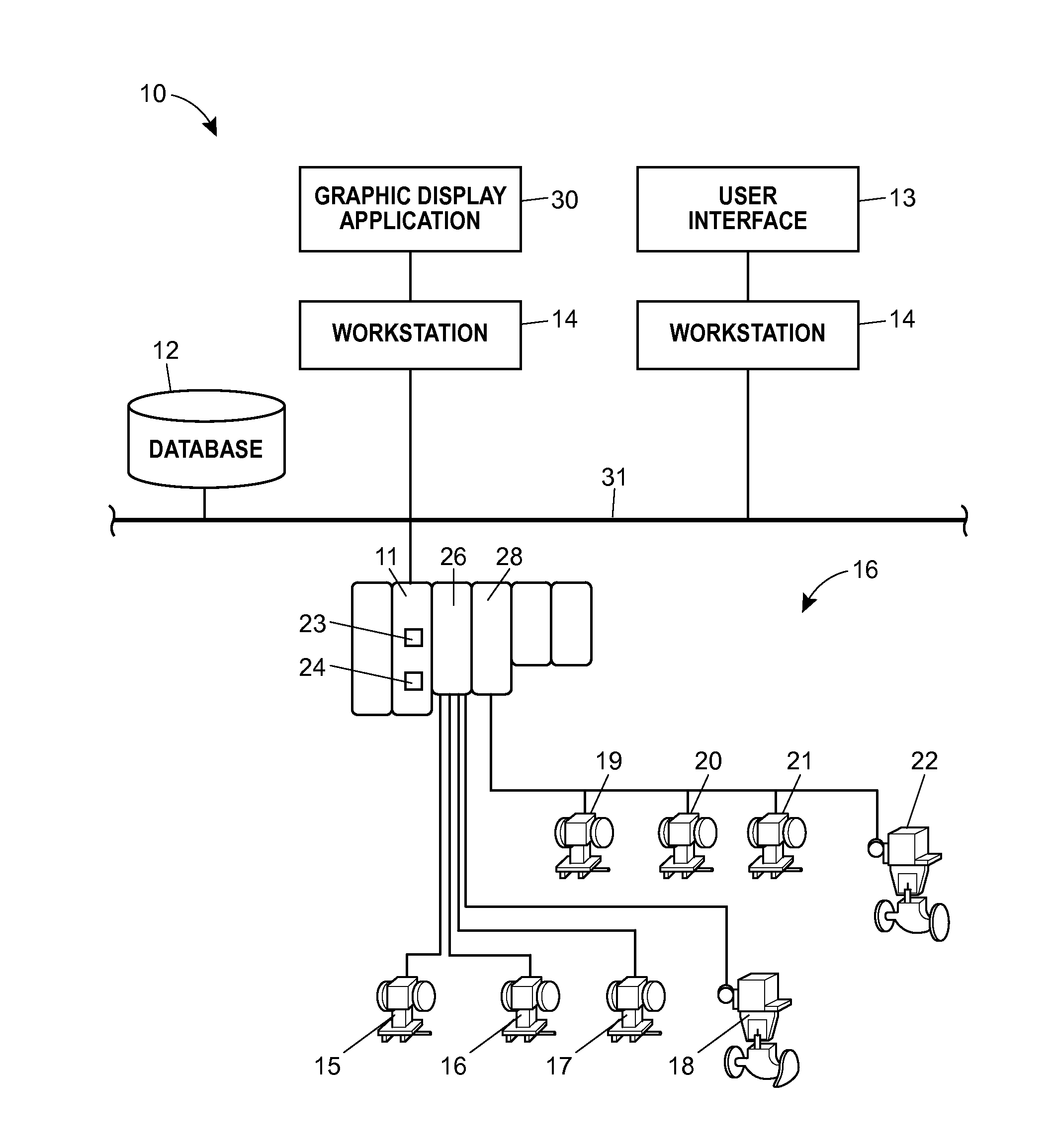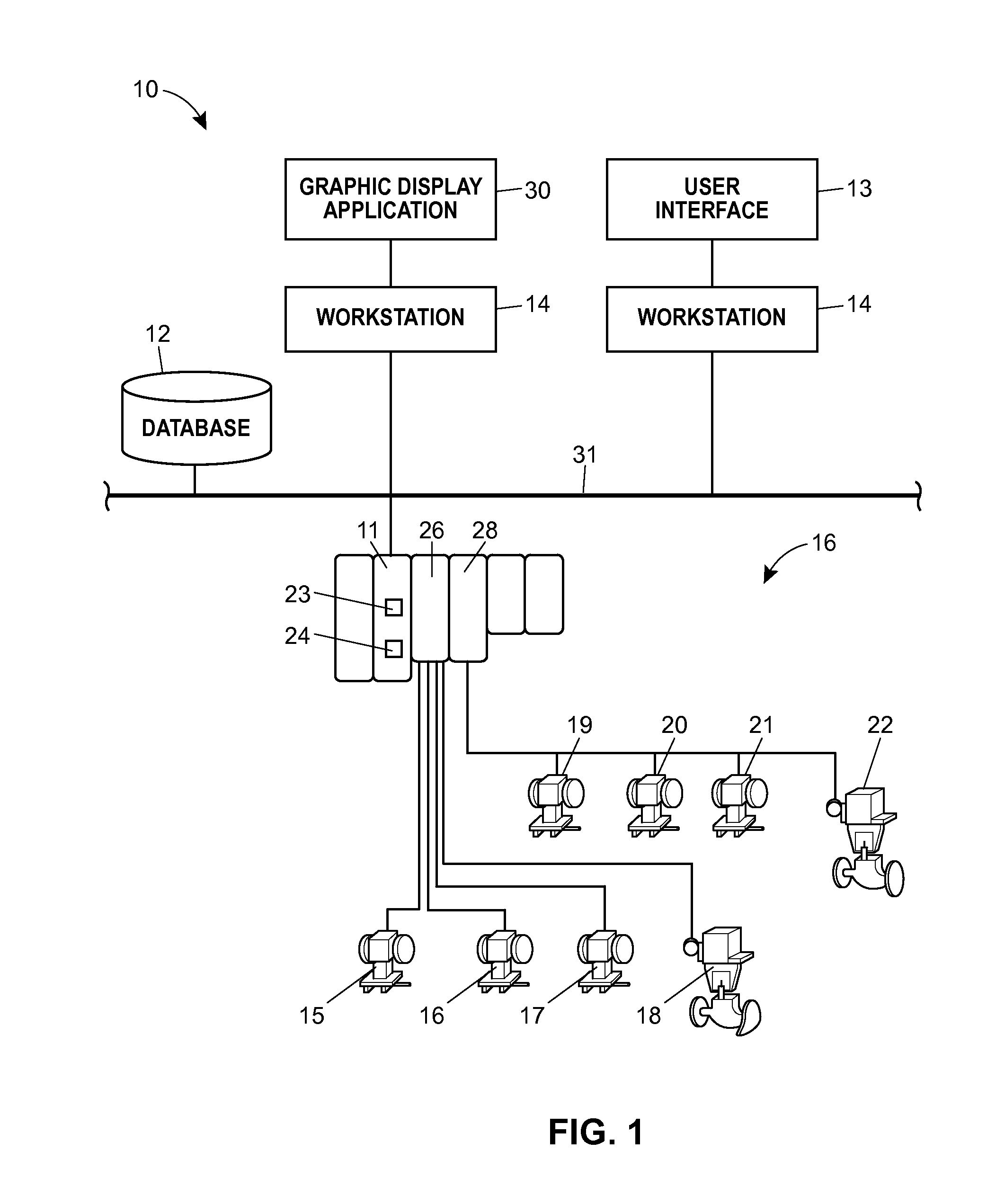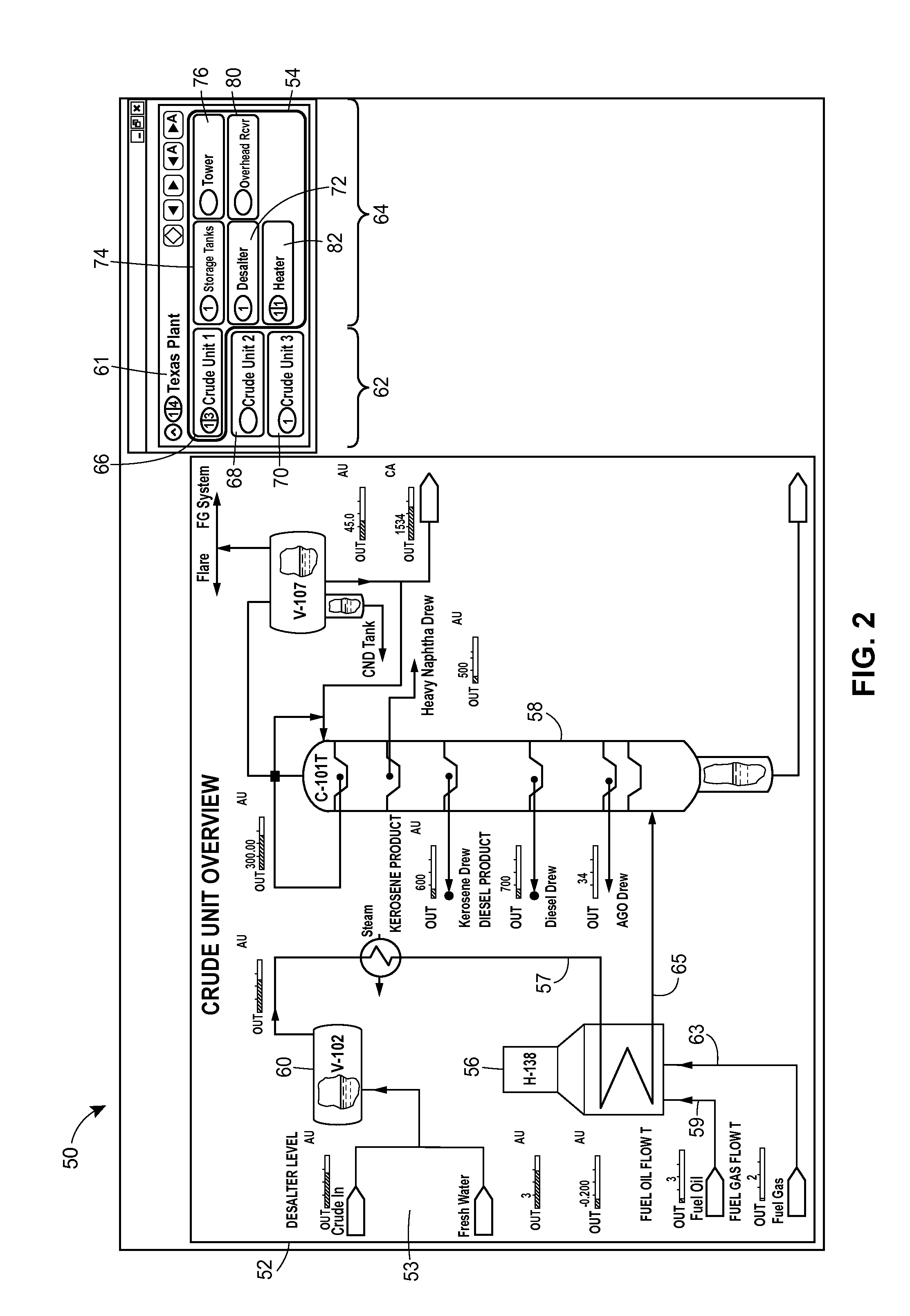Graphical Process Variable Trend Monitoring, Predictive Analytics and Fault Detection in a Process Control System
a technology of process variable and trend monitoring, applied in the field of process control system, can solve the problems of difficult for a user to see and understand the real-time data itself, much less the temporal field, and the display of real-time process variable values via the p&id does not effectively support the detection of changes in these real-time values over tim
- Summary
- Abstract
- Description
- Claims
- Application Information
AI Technical Summary
Benefits of technology
Problems solved by technology
Method used
Image
Examples
Embodiment Construction
[0041]A process control monitoring system 10 illustrated in FIG. 1 that may be used to implement and to display a graphic trend symbol described herein includes a process controller 11 connected to a database 12 and to one or more host workstations or computers 14 (which may be any type of personal computers, workstations, etc.) via a network bus 31, such as a Ethernet communication network for example. Each workstation 14 may include a memory for storing a plurality of applications including, for example, a graphical display application 30 and may be communicatively coupled to a user interface 13. The controller 11 is also connected to field devices 15-22 via input / output (I / O) cards 26 and 28. The database 12 may be any desired type of data collection unit having any desired type of memory and any desired or known software, hardware or firmware for storing data. The system 10 may also store process variable values or process variable data within the database 12 for use in generati...
PUM
 Login to View More
Login to View More Abstract
Description
Claims
Application Information
 Login to View More
Login to View More - R&D
- Intellectual Property
- Life Sciences
- Materials
- Tech Scout
- Unparalleled Data Quality
- Higher Quality Content
- 60% Fewer Hallucinations
Browse by: Latest US Patents, China's latest patents, Technical Efficacy Thesaurus, Application Domain, Technology Topic, Popular Technical Reports.
© 2025 PatSnap. All rights reserved.Legal|Privacy policy|Modern Slavery Act Transparency Statement|Sitemap|About US| Contact US: help@patsnap.com



